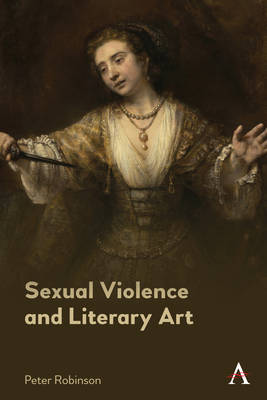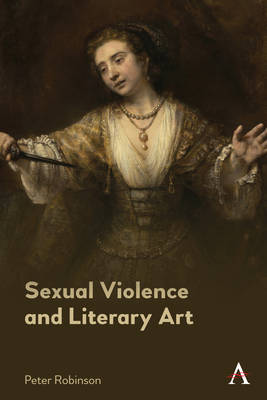
- Retrait gratuit dans votre magasin Club
- 7.000.000 titres dans notre catalogue
- Payer en toute sécurité
- Toujours un magasin près de chez vous
- Retrait gratuit dans votre magasin Club
- 7.000.0000 titres dans notre catalogue
- Payer en toute sécurité
- Toujours un magasin près de chez vous
Description
Written by a practising poet and novelist who has close experience of the subject matter and has published creative work in the areas being examined, Sexual Violence and Literary Art is a wide-ranging study, covering carefully selected works from Ovid through Shakespeare, to Pope, Richardson, Shelley, Hardy, T.S. Eliot, Nabokov and beyond. It addresses the necessary complicity of any representation in what is represented, by examining ways in which canonical male writers have attempted to evoke and address representations of sexual violence in poetry, prose fiction, and poetic drama. Representation has to involve itself with what is represented, and, in this sense, it is not possible to address in literature sexual violence without taking on the complicity of the representation with what is represented. The chosen works of literary art are understood not only as locations in which the showing of pain and cruelty inflicted through sexually acts occurs, but also as occasions to activate means at these writings' disposal to work upon those representations of pain and cruelty towards possible readerly benefits. The book draws substantially upon recent criticism and theory written by philosophers, theorists, art historians, and literary critics including Martha Nussbaum, Catharine A. MacKinnon, Susan J. Brison, Mary D. Garrard, Nancy J. Vickers, and Coppélia Kahn. Writers may very well wish to determine the cultural meaning and ideological implications of their work, but for many reasons, including the necessary role of reader response and interpretation in the literary process, the meaning of a work cannot be entirely or finally fixed. Among the consequences of this is the fact that interpretations of literary works are always transactional negotiations with circumscribed perspectives. In light of these convictions, Sexual Violence and Literary Art subjects the literary artworks it addresses to close scrutiny derived from various generations of women's writing on rape and upon the critical vicissitudes of the works studied. While recognising only too well the continuing presence of male violence in sexual relationships, this book's aims include the identification of what roles literary art may play in its understanding, amelioration, and transformation. In these ways it offers a response to historical problems incurred through the inheritance of damage caused by the exercise of unequal power relations, and it offers an account of how literary art may work to overcome them.
Spécifications
Parties prenantes
- Auteur(s) :
- Editeur:
Contenu
- Nombre de pages :
- 250
- Langue:
- Anglais
Caractéristiques
- EAN:
- 9781785278853
- Date de parution :
- 07-10-25
- Format:
- Livre relié
- Format numérique:
- Genaaid
- Dimensions :
- 153 mm x 229 mm
- Poids :
- 453 g

Les avis
Nous publions uniquement les avis qui respectent les conditions requises. Consultez nos conditions pour les avis.






